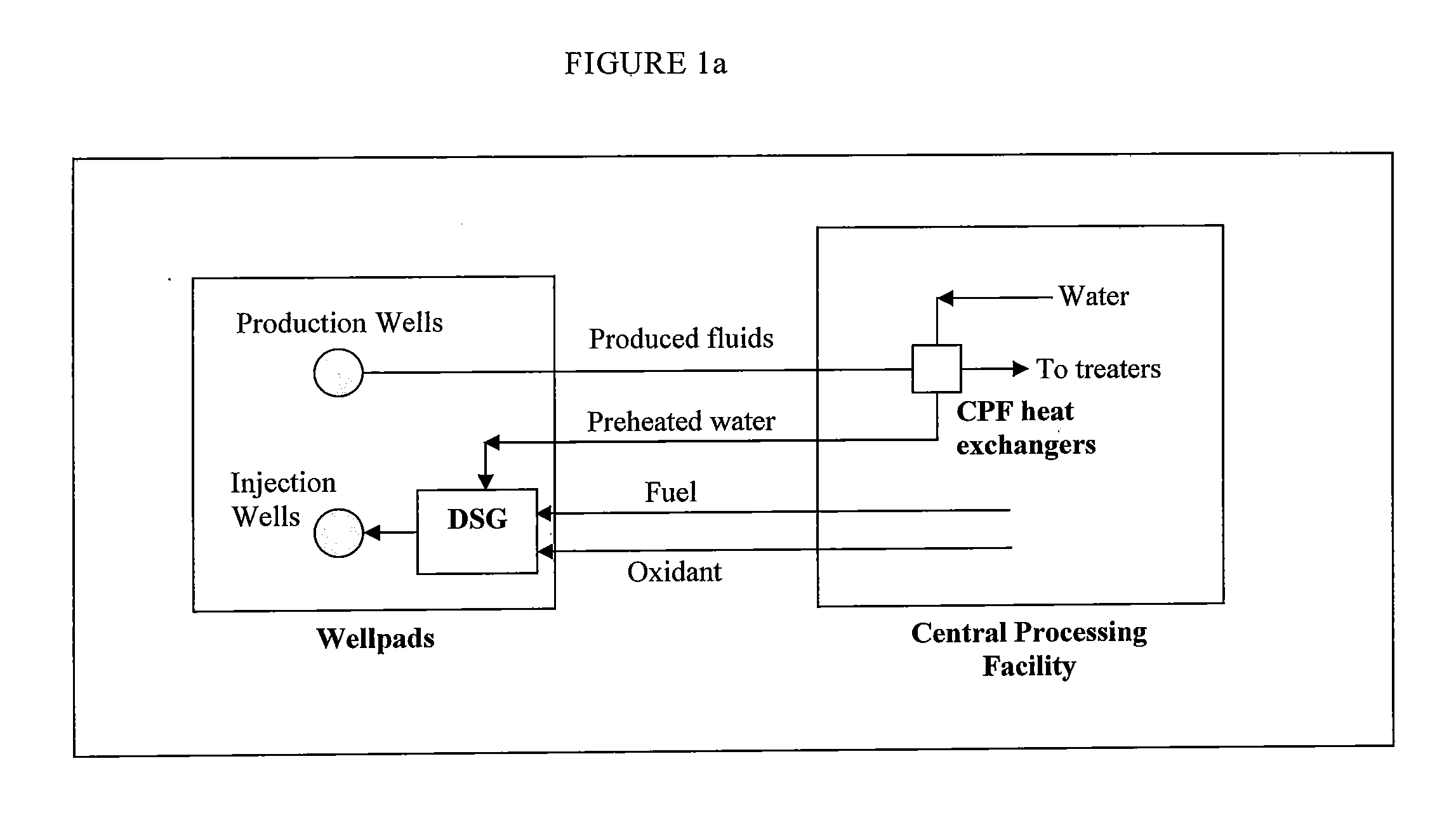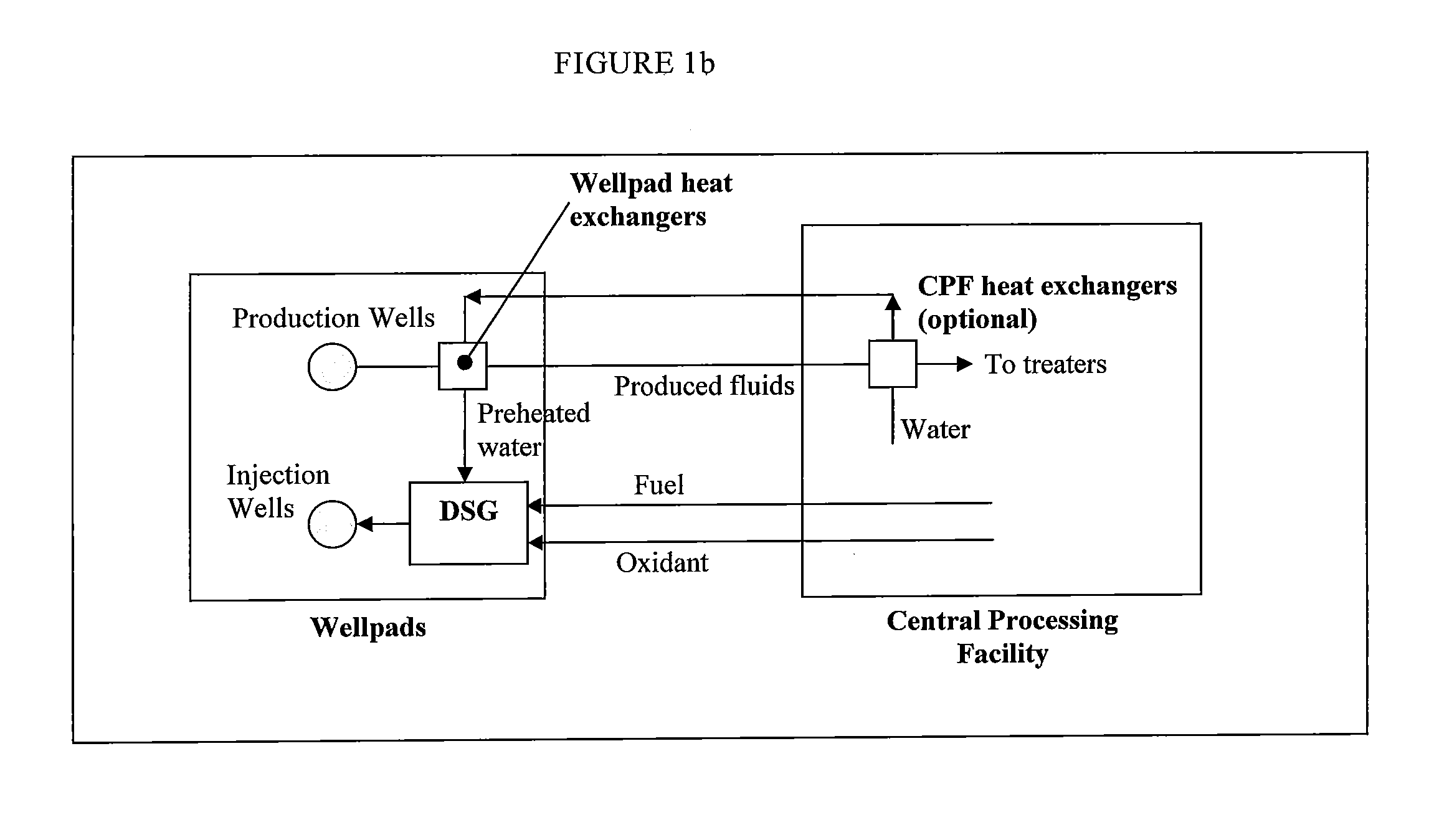Heat recovery method for wellpad sagd steam generation
a heat recovery and wellpad technology, applied in the direction of insulation, ignition automatic control, borehole/well accessories, etc., can solve the problems of large cost of steam generation, large cost of oil production, and decline of natural gas production in canada, so as to save energy in heating feedwater and reduce heat loss , the effect of saving energy
- Summary
- Abstract
- Description
- Claims
- Application Information
AI Technical Summary
Benefits of technology
Problems solved by technology
Method used
Image
Examples
example 1
Heating Feedwater by Produced Emulsion at Wellpad
[0039]An AspenPlus® process model (a process modeling tool supplied by Aspen Technology, Inc.) was used to quantify the benefits of wellpad versus CPF heat recovery. Specifically, the model was used to determine the feedwater preheat temperatures that can be attained for DSG-based SAGD operations.
[0040]FIG. 2a shows the CPF heat recovery case where produced fluids at the wellpads are conveyed to the CPF in two separate lines, one containing bitumen / water emulsion, and one containing produced gases. As shown in the figure, this will enable a DSG water preheat temperature of 150° C. at the CPF, which drops to 140° C. at the wellpads assuming a 10° C. temperature drop in the water lines due to ambient heat losses.
[0041]The wellpad heat recovery case shown in FIG. 2b was based on heat exchange with the produced water / bitumen emulsion at the wellpads and heat exchange with produced gases at the CPF. This was considered a preferred configur...
example 2
Heating Feedwater by Produced Fluids at Wellpad
[0045]The configuration of this example is similar to Example 1 as shown in FIG. 2b, except that the heat exchange takes place between the feedwater and the produced fluids before the produced fluids enter the pad separators. One benefit of such configuration is that even more heat can be recovered from the produced fluids, because some enthalpies may be lost during the separation in the pad separators.
example 3
Heating Feedwater by Produced Gases at Wellpad
[0046]The configuration of this example is similar to Example 1 as shown in FIG. 2b, except that the heat exchange takes place between the feedwater and the produced gases instead of the produced emulsions.
PUM
 Login to View More
Login to View More Abstract
Description
Claims
Application Information
 Login to View More
Login to View More - R&D
- Intellectual Property
- Life Sciences
- Materials
- Tech Scout
- Unparalleled Data Quality
- Higher Quality Content
- 60% Fewer Hallucinations
Browse by: Latest US Patents, China's latest patents, Technical Efficacy Thesaurus, Application Domain, Technology Topic, Popular Technical Reports.
© 2025 PatSnap. All rights reserved.Legal|Privacy policy|Modern Slavery Act Transparency Statement|Sitemap|About US| Contact US: help@patsnap.com



